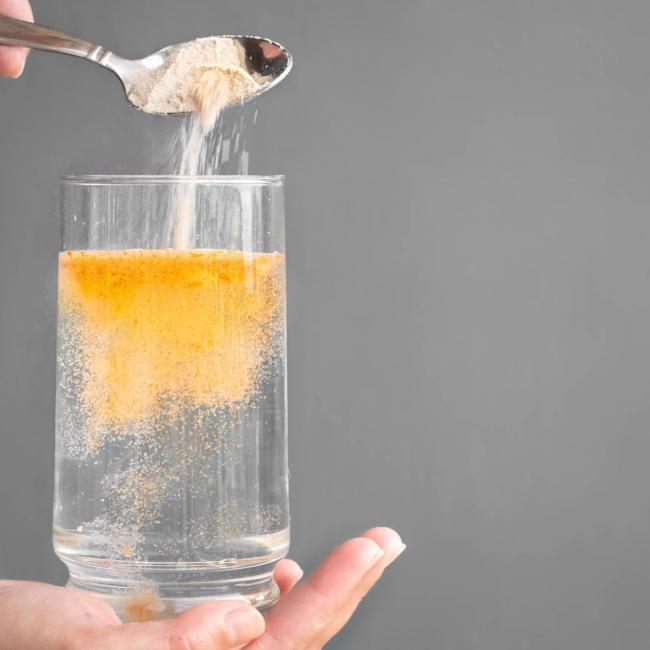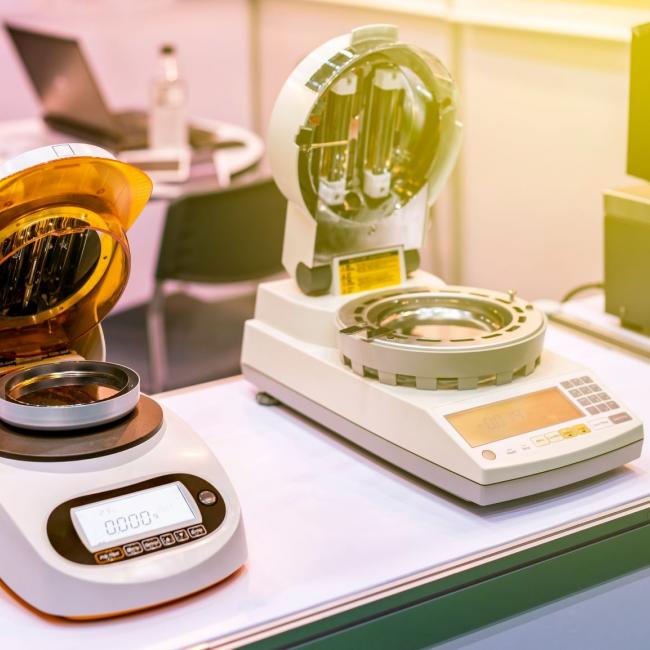Moisture content of powders plays an important role in processing.
This article discusses:
- Hydration of powders
- The four different properties associated with hydration
- Two formulas to calculate the moisture content of powders
The experts at Dinnissen Process Technology are available to answer all your questions:
Get in touch with Juul Jenneskens 077 467 3555
Hydration of powders
Hydration of powders means adding water intentionally or not. The term often refers to the absorption of water from the air. In the food industry where solutions in water are important, such as with milk powder or coffee powder, the consumer expects the powder to dissolve quickly in water and thus return the original recognizable properties of the product. At this point, when the water absorption of the powder matters, we speak of the powder property of hydration. Products that absorb water easily are hygroscopic. An example of a product that is slightly hygroscopic is table salt. If this is exposed to an environment with high humidity, it will clump. For milk powder it is positive during preparation that it is hygroscopic and absorbs water easily. During production and distribution, this property ensures that extra account must be taken of this.

Hydration of powders
Four properties associated with hydration
Some components in food such as proteins and carbohydrates absorb water. How much water they absorb depends on:
- Surface composition
- Particle size
- Porosity
- Molecular structure
In some cases, the hydration of water is greater at the particle level than at the bulk level. This has to do with the chemical structure and the surface structure of the powder. Compared to amorphous powders, crystalline powders dissolve slowly. It is difficult for the water molecules to penetrate into the specific molecular structure of crystalline powders. Composite powders can also have different surface patterns, which make it difficult for water to penetrate the fabric.
Two formulas to calculate the moisture content
Moisture content of powders plays an important role in processing. It affects the consistency of the powder. Too high a humidity can result in lumps or stickiness. On the other hand, a higher moisture content can be advantageous in granulation and agglomeration processes.
Two formulas are used to calculate the moisture content.
Apart from the two formulas above, there are other formulas to calculate the moisture content. There are powders that have their own formula to measure moisture content. For example, there is the International Dairy Federation (IDF) standard for measuring the moisture content in dairy powders. The moisture content is determined by drying the powder in an oven at 102 ° C ± 2 ° C for 3 hours. The formula used is:
When determining the moisture content in the powder, the moisture content in the atmosphere is also an aspect to take into account. Most powders immediately absorb moisture from their environment. It is of course important to include the relative humidity and temperature of the environment in the calculation and to map the relationship between the moisture in the powder and the moisture in the environment.

Moisture analyzer

Name: Juul Jenneskens
Advisor
Please feel free to contact me if you have any questions about this subject. My team of colleagues and I are ready to answer!
Get in touch with Juul Jenneskens 077 467 3555 [email protected]
Do you prefer to request a consultation directly?
Many powders each have their own method of measuring moisture content
